Portrait of Mary Weithoff, Work in Progress Demo
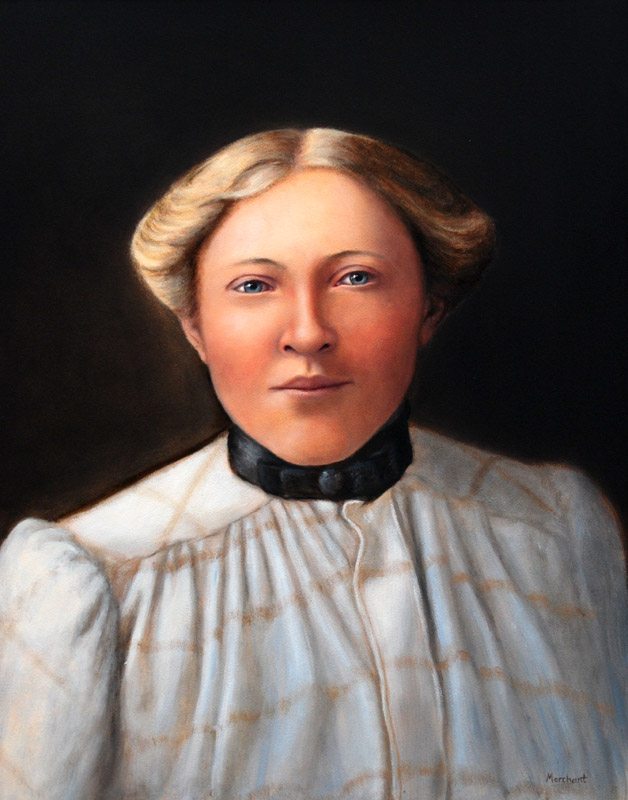
Portrait of Mary Weithoff
Oil on Gessobord, 11x14, 2009

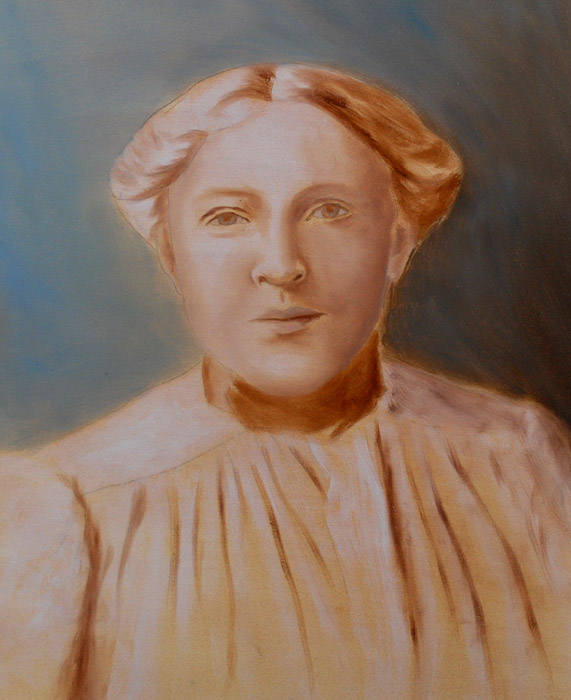 |
This will be a portrait of Mary Weithoff, my great-grandmother. The only photo I have to work from is very blurry and sepia-colored, so a large portion of this painting will be guesswork. This is much harder for an artist, as most artists rely on clear reference photos or live models to construct their artwork.
While many laypeople might assume that artists just make up pictures from their imagination, this is simply not so. To provide realism, an actual example of the realistic interplay of light and color on a subject must be observed. Thus, any painting where guesswork is done can be tricky.
For the colors I'll be using, I'm going to use my prior experience from other portraits I've done to supply the color information I'll be using here. I'll be using a similar technique to the one used for the Bouguereau studies done in other WIP examples.
Before any work is started, I typically tone the panel with a burnt umber wash. This provides a mid-tone base on which to start the painting, and I can add both lighter and darker values on top of that. Because the toned panels need to dry for a while before any work can be started, I usually tone several panels at a time so I have plenty pre-toned when I need them.
This initial stage is basically a pre-underpainting underpainting stage. This is just a couple of hours work so far. I like to add white to all areas of the skin before shading, that way they are unified in color initially. Shading will come later.
When I paint, I think of the oil paint as one might view a stained glass window. A white underlayer provides an opaque base which will reflect light. Any translucent colors on top of that white base will pass through, hit the opaque white, and bounce back through the colored layers.
Oil on Gessobord, 11x14.
|
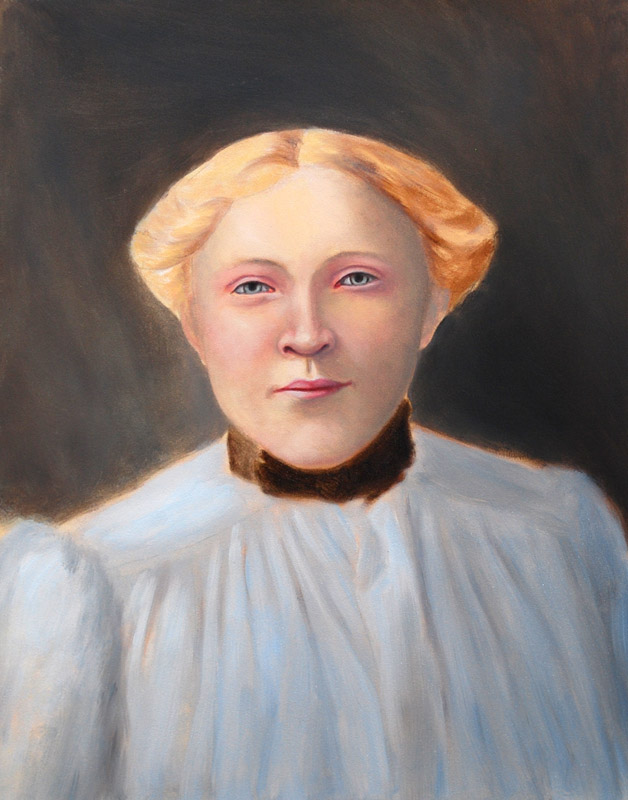 |
I'm going strong with the alizarin crimson in the underlayers, as these will be covered and more muted when we get to the finishing layers. A lot more layering and shading to do before some of the shapes make sense.
This is what is commonly referred to as the "ugly stage", and virtually all paintings go through this stage at some point. I've often joked that the only difference between a new painter and an experienced painter is this: new painters reach this stage, freak out, and stop. Experienced painters reach this stage and know they need to keep going. :)
|
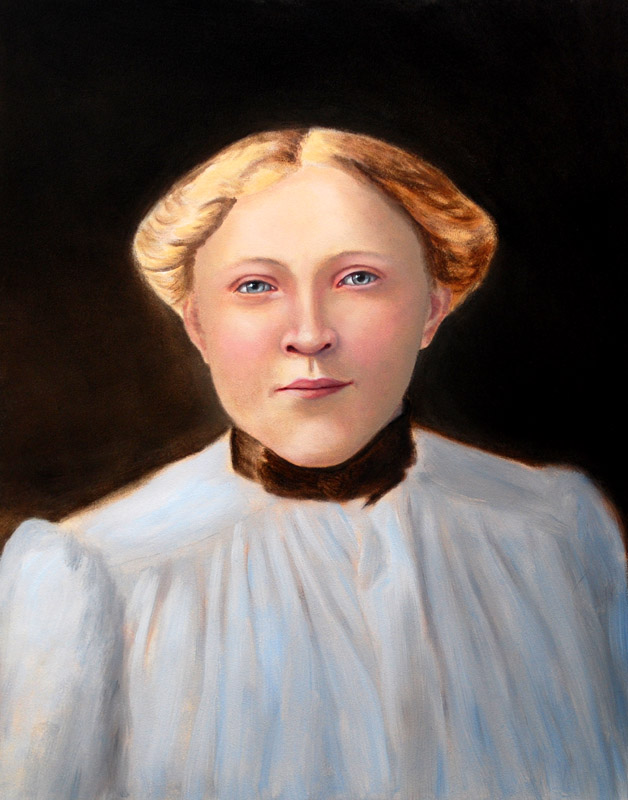 |
This session was mainly spent adding another layer of skin and evening out the
tones of the skin.
My skin palette consists of naples yellow + white + a small amount of alizarin crimson. By mixing these colors in varying proportions, most pale skin colors can be obtained.
My technique for creating smooth skin is "dab and scumble". I dab on the color paint with one brush, and then I take a dry brush, one that is usually pretty frayed already, and scumble the paint until the brush strokes are no longer visible. This technique must be done on a layer that is completely dry underneath, so that the scumbling won't pick up the previous layer's paint instead.
|
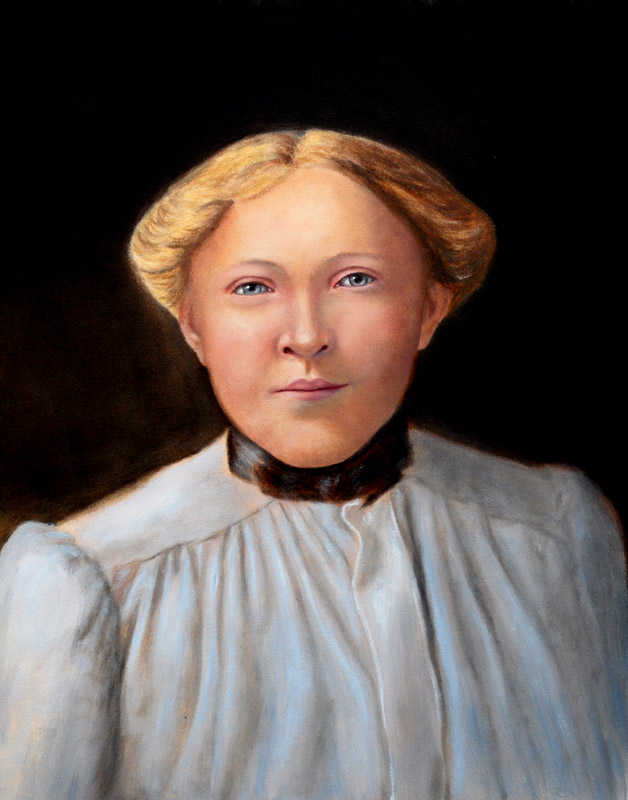 |
Here's more on this portrait - still messing with the likeness, more to do yet.
|
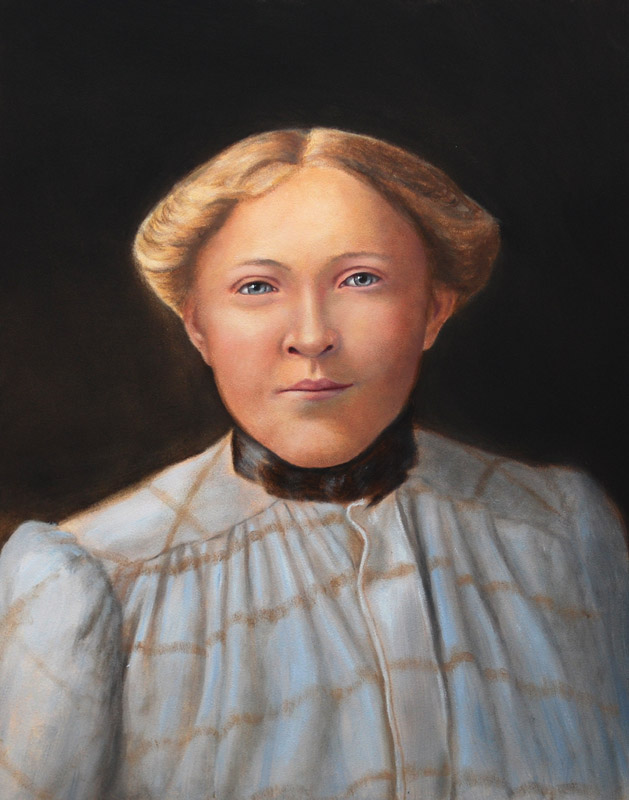 | Here I'm continuing to work with the likeness. Because this is a family portrait, I want this to look as close to the actual likeness as possible, so a lot of the steps here have been in making small changes to correct the likeness.
|
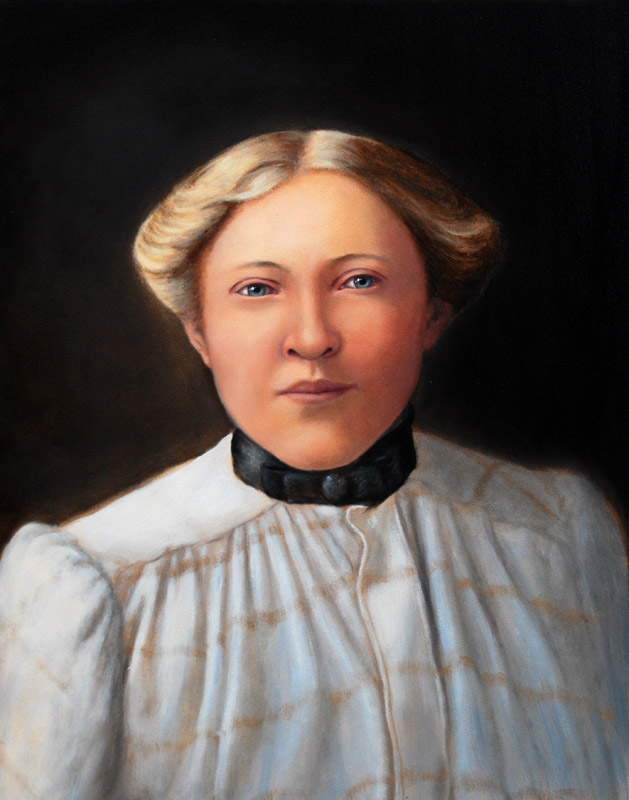 |
Here's a bit more - I still have a few more things to change but she's almost done.
|
 | Here's the final on this one.
|
|
|
